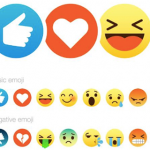Courts Struggle to Interpret Emojis

Legal researchers at Melbourne and Deakin Universities have looked into the problems that arise when emojis are used in the courtroom as evidence.
The study by Professors Elizabeth Kirley and Marilyn McMahon, entitled ‘The EmojiFactor: Humanizing the Emerging Law of Digital Speech’, discusses how courts are struggling to keep up with the ways emojis are now being used.
Digital communication
As the younger generations tend to communicate by digital media, evidence containing emojis is increasingly being used in cases involving children and young people, including family law and sexual assault cases.
Last year, international social intelligence company Brandwatch reported that 95 per cent of internet users have sent an emoji at some point. It found that around 9.9 million Australians regularly use emojis to communicate, and many use the images more often than words to communicate feelings.
Inside the courtroom
In 2015, two American men were arrested for stalking after allegedly sending threatening messages to another man via Facebook Messenger, without ever using words. The message that led to their arrest consisted of a fist emoji, followed by a hand pointing to an ambulance emoji.
And in 2016, a young man was convicted in France of criminal threats after sending a gun emoji in a text message to his girlfriend. The court ruled that the gun-shaped character at the end of the message constituted a “death threat in the form of an image”, and sentenced the man to six months in prison and a 1,000 Euro fine.
In 2017, a judge in Israel found that string of emojis sent in text messages between a couple and a landlord help establish a contractual intention to rent an apartment. The landlord relied upon thumbs up and fingers crossed emojis when taking a property off the market, helping to secure $3000 in damages when the couple reneged on the deal.
Also last year but closer to home, the Queensland Supreme Court found an unsent text message with a smiley emoji saved in the drafts folder of a dead man’s phone could constitute a valid will. The judge ruled that the informal nature of the message did not stop it from being a valid expression of the deceased’s intentions.
Difficulties in interpretation
The Australian study highlights the difficulties posed by emojis in certain situations, particularly in criminal cases where jurors are of different ages, varying cultural backgrounds, and have disparate experiences with technology.
The study outlined that in January, the Wall Street Journal reported that US law firm Bryan Cave LLP held an ‘Emoji 101’ conference for its Atlanta office, finding that every lawyer reported a different interpretation of the “unamused face” emoji with raised eyebrows and a frown.
“One of the problems is that interpretation from the sender’s point of view is not at all guaranteed to be the same interpretation from the receiver’s point of view,” said one of the authors.
“Even if it’s the same image – because images change on different devices. If I send you an emoji on my iPhone and you get it on Samsung, it’s not going to be the same. The graphics are different.”
The study also found that interpretation can be dependent on context, and that ironic or sarcastic responses via emoji can often be interpreted as literal.
Disconnect of demographics
Kirley and McMahon found a significant generational disconnect when it comes to deciphering evidence in the form of emojis.
“It’s like a code, a separate language for these young people,” the study reported. “Judges in court are aged 40-60 and are mostly men. I remember reading that some US Supreme Court judges still write judgments by hand. How can we expect them to be experts in digital speech?”
The writers examined several problematic emoji-related cases, including one in New Zealand during which a judge acknowledged having no idea what an emoji was. The case involved a text message sent by a man to his ex-partner, in which he wrote: “You’re going to fucking get it ✈”.
The court found that the emoji amplified the man’s threat, and ultimately sentenced him to 8 months in prison. The man’s purchase of a plane ticket the next day added context to the threat.
Emoji experts
The study proposes the creation of a “discrete legal space” to resolve emoji interpretation issues. It says court need to more readily allow evidence from emoji experts, in the same way evidence is regularly heard from linguists.
This, according to the authors, could resolve some of the problems arising from our increasing use of the expressive icons.





